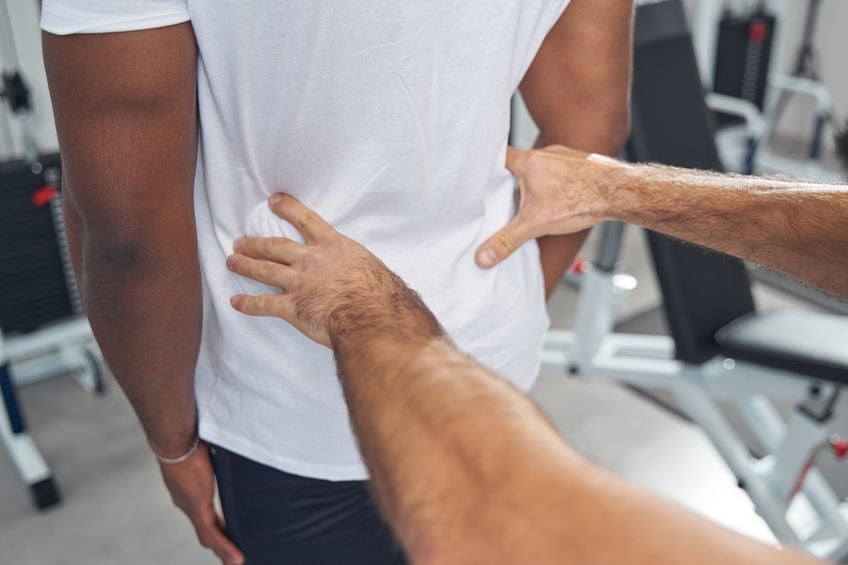A Little Bent Out Of Shape?
Fingers that look a bit bent and deformed could be Dupuytren’s contracture. Persons with Dupuytren’s contracture experience an abnormal thickening of tissues and ligaments in the palm and fingers. Over time, the affected fingers curl up, significantly limiting the use of the hands. The condition can happen in all fingers but mostly affects the ring finger and middle finger.

Common symptoms of Dupuytren's contracture
The condition develops slowly, usually over several years. Some symptoms include pain and the inability to straighten the fingers. The thickening of tissue creates a thick, visible cord located at the base of the fingers. Most persons ignore the condition since Dupuytren's rarely affects the thumb and index fingers. However, Dupuytren's can develop to the point where using the hand becomes difficult.
What's behind your contracture?
Healthcare providers have been unable to find the condition's root cause. There is no known reason why the tissue begins to thicken in the palm. However, there are several risk factors involved. For instance, research links Dupuytren's to mostly middle-aged men of Eastern European descent. That means there is likely a hereditary factor involved. Other risk factors include smoking, excess alcohol consumption, diabetes, and epilepsy. Persons with thyroid issues, liver disease, or previous hand injuries should also be cautious.
Treatment with steroid injections
Anyone who suspects Dupuytren's can perform a simple tabletop test. Place the palm and fingers flat on a table. If all fingers cannot lay flat, the raised fingers may be affected. From there, a doctor can further confirm the condition. Treatment starts with steroid injections to the affected area. The surgeon injects the medication at the base of the finger. Steroid injections reduce the pain and inflammation, and relief can last for several months.
Support with splinting and therapy
Steroid injections have a high success rate and can even restore some of the fingers' flexibility. However, adding therapy can significantly improve the success rate of treatment. Simple, consistent physical therapy exercises improve strength and flexibility. Occupational therapy can help the patient perform simple tasks at home or at work. When at rest, a special splint helps keep the fingers in place and further reduces inflammation.
Do you need some needling?
Needling is a simple, non-invasive procedure to improve the condition's symptoms. A doctor uses a needle to break up the thick bands of tissue causing the contracture. Needling can be useful. However, the treatment is often short-term. In some cases, needling could be combined with enzyme injections to break up the tissue further.
Time to think about surgery
On the rare occasion where these steps fail, surgery can help. Most surgeons will opt for surgery if there is at least a 20-degree bend of the MP joint. A surgeon will usually perform a fasciectomy. The surgery starts with a small incision at the base of the fingers. Then, using small tools, the surgeon removes the affected tissue. Surgery must be accompanied by physical therapy to improve the chances of recovery.
Success starts with quick action
Dupuytren's contracture can be a difficult condition to treat. Steroid injections are a helpful beginner treatment, along with therapy. Other treatment options, like needling, are effective but the effects last short-term. Even with surgery, there is a chance that the condition can return. The chances increase if the patient does not act fast to treat the issue. Look for the signs, perform a tabletop test, and seek medical help.
Can Lower Back Pain Return After Spinal Surgery? 3 Lifestyle Changes To Get The Most Out Of Fusion
Minnesota Valley Valley Center2024-04-02T14:49:38-05:00April 15th, 2024|
Spinal surgery is an excellent solution for lower back pain, but symptoms can return. With lifestyle changes, patients can get the most out of fusion.
A New Lease On Life: Exploring How Robotic Total Joint Replacement Can Get You Active Again
Minnesota Valley Valley Center2024-03-24T17:38:47-05:00March 29th, 2024|
Robotic total joint replacement uses a robotic arm to replace the joint. This innovative approach allows a quick return to activities.
Restoring Dexterity: How Outpatient Carpal Tunnel Surgery Can Change Your Life
Minnesota Valley Valley Center2024-03-24T17:38:37-05:00March 15th, 2024|
After months of wrist and hand pain, carpal tunnel surgery may be needed. With outpatient options, restored dexterity with less pain and discomfort is possible.
More Articles from MVSC
January 30, 2024
There are many options for hip arthritis before surgery. These options include physical activity, lifestyle modifications, and medications.
December 28, 2023
Most doctors prefer to avoid spinal surgery if possible. With epidural spinal injections, patients can experience long-term pain relief.
November 7, 2023
Sacroiliac joint pain can be alleviated through radiofrequency ablation, which uses radiofrequency signals to disrupt pain signals in nerves.
September 5, 2023
Tennis elbow is a common but painful chronic condition affecting the arm. For some people struggling, elbow arthroscopy may be the answer.










